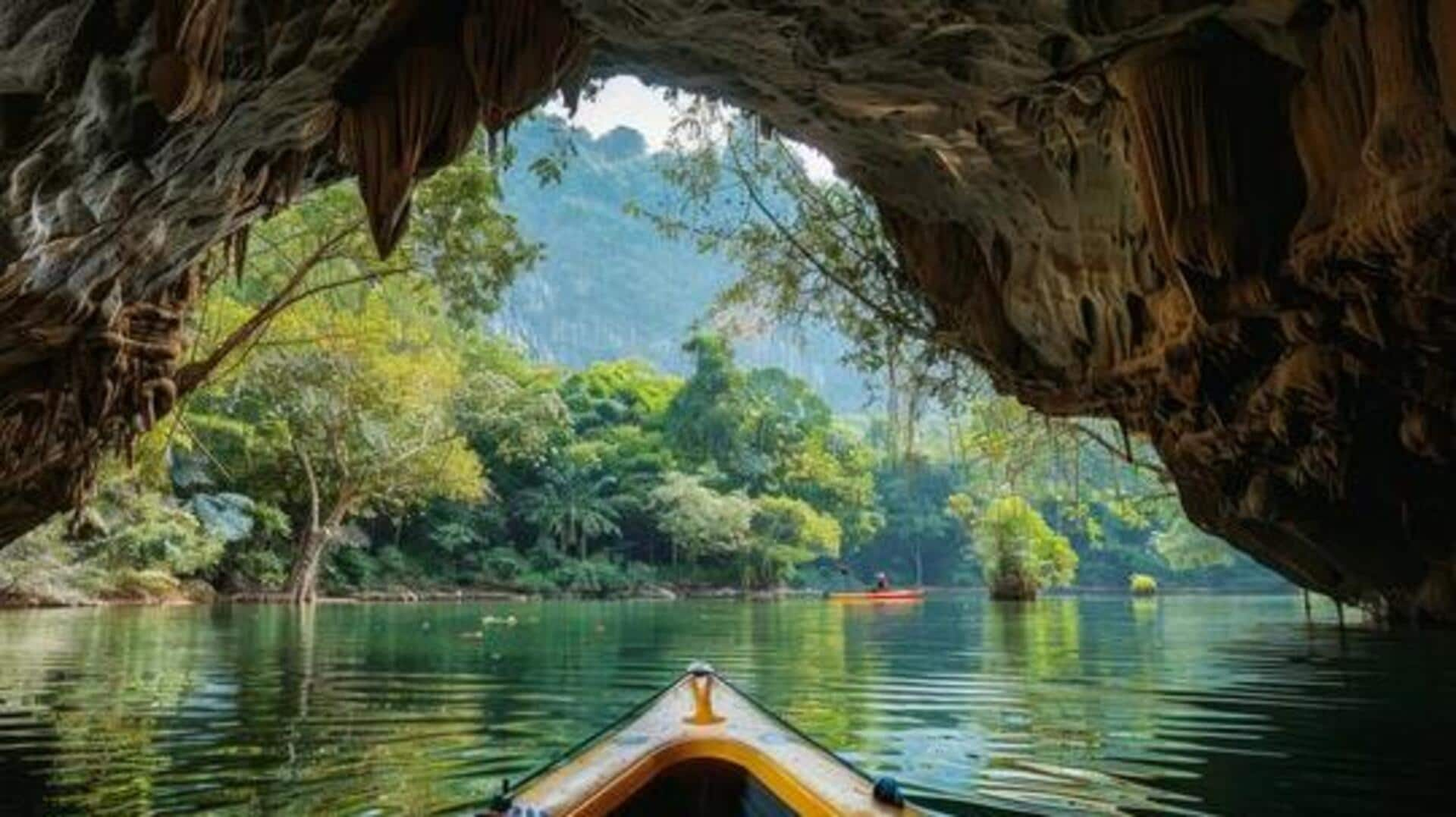
Cave kayaking in Vietnam's karst formations: A guide
What's the story
Vietnam's gorgeous karst formations make for the perfect setting for cave kayaking adventures. The limestone structures, formed over millions of years, create a stunning landscape that draws adventurers from across the globe. Kayaking through these caves offers a chance to explore hidden waterways and incredible natural beauty. Here's a look at the essentials of going on one such adventure and what makes it so special.
National Park
Exploring Phong Nha-Ke Bang National Park
Phong Nha-Ke Bang National Park hosts some of the most stunning karst formations in Vietnam. The park is dotted with caves and underground rivers, ideal for the kayakers. One can paddle through dark caverns, lit by headlamps, to discover stalactites and stalagmites created over thousands of years. The park's biodiversity, with different plant and animal species, makes it even more fascinating.
Gear essentials
Essential gear for cave kayaking
Proper gear is critical for a safe and fun cave kayaking experience. You'll need a sturdy kayak that is designed for maneuverability in tight spaces. Waterproof clothing protects you from the damp environment inside caves. Headlamps or waterproof flashlights are necessary for safely navigating dark passages. Life jackets are mandatory to ensure safety while exploring these subterranean waterways.
Timing tips
Best time to visit Vietnam's caves
The best time to explore Vietnam's caves is during the dry season from November to April, when water levels are low and conditions remain stable for kayaking. During this time, the temperatures are also cooler, making it much easier to indulge in outdoor activities like paddling through caves. If you plan your trip around these months, chances of favorable weather are higher.
Safety tips
Safety precautions while kayaking in caves
Safety should be paramount while kayaking in caves under karst formations. Always go along with an experienced guide who is well-versed with the area and can offer valuable insight into safely traversing difficult portions. Have all gears checked beforehand; this includes checking kayaks for damages or leaks that may compromise safety during exploration activities inside these natural wonders.